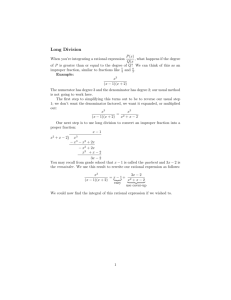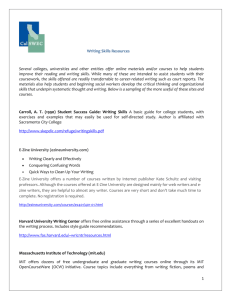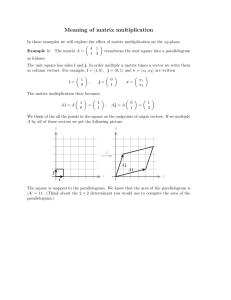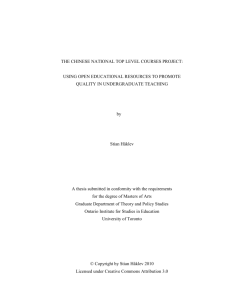Pipelined RISC Processor
advertisement
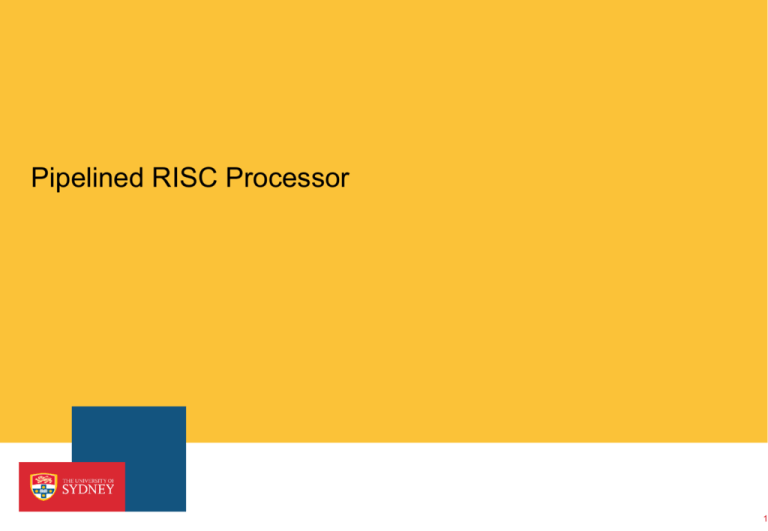
Pipelined RISC Processor
1
Pipelined MIPS
› To pipeline MIPS:
- First build MIPS without pipelining with CPI=1
- Next, add pipeline registers to reduce cycle time while maintaining CPI=1
Source: Arvind (MIT Opencourseware licence http://ocw.mit.edu/terms/index.htm#cc)
2
Pipelined Datapath
› Clock period can be reduced by dividing the execution of an instruction into multiple
cycles
› tC > max {tIM, tRF, tALU, tDM, tRW} ( = tDM probably)
› However, CPI will increase unless instructions are pipelined
Source: Arvind (MIT Opencourseware licence http://ocw.mit.edu/terms/index.htm#cc)
3
An Ideal Pipeline
› All objects go through the same stages
- No sharing of resources between any two stages
- Propagation delay through all pipeline stages is equal
- The scheduling of an object entering the pipeline is not affected by the objects in other
stages
› These conditions generally hold for industrial assembly lines.
› But can an instruction pipeline satisfy the last condition?
Source: Arvind (MIT Opencourseware licence http://ocw.mit.edu/terms/index.htm#cc)
4
How to divide the datapath into stages
› Suppose memory is significantly slower than other stages. In particular, suppose
t = 10 units IM
t = 10 units DM
t = 5 units ALU
t = 1 unit RF
t = 1 unit RW
› Since the slowest stage determines the clock, it may be possible to combine
some stages without any loss of performance
Source: Arvind (MIT Opencourseware licence http://ocw.mit.edu/terms/index.htm#cc)
5
Alternative Pipelining
Source: Arvind (MIT Opencourseware licence http://ocw.mit.edu/terms/index.htm#cc)
6
Maximum Speedup from Pipelining
Source: Arvind (MIT Opencourseware licence http://ocw.mit.edu/terms/index.htm#cc)
7
5 stage Pipeline
Source: Arvind (MIT Opencourseware licence http://ocw.mit.edu/terms/index.htm#cc)
8
Summary
› Design of a simple RISC processor
- First you design datapath and then add control
- All designs (serial, parallel) or otherwise follow a similar methodology
› Not covered
- What happens if there are pipeline dependencies e.g. add r1, r2, r3; add r2, r1, r1
- What happens if we branch e.g. add r1, r2, r3; beqz r1 loop
- These are called hazards and can be resolved by stalling (low performance) and to
some degree by forwarding (add internal paths to make data available earlier)
- Refer to [1] and [2] for details
Source: Arvind (MIT Opencourseware licence http://ocw.mit.edu/terms/index.htm#cc)
References
[1] Patterson, D. A., and J. L. Hennessy. Computer Organization and Design: The
Hardware/Software Interface, Morgan Kaufman.
[2] Hennessy, J. L., and D. A. Patterson. Computer Architecture: A Quantitative
Approach, Morgan Kaufman.
10
